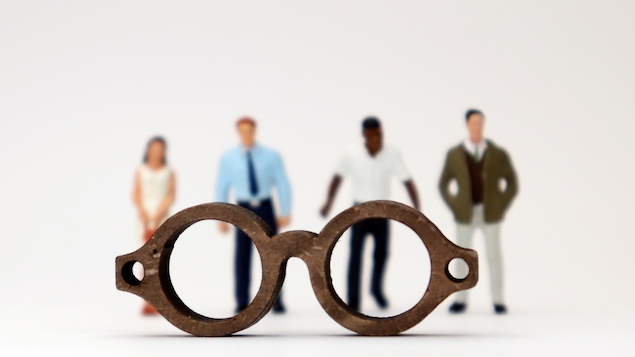[ad_1]

We all apply a lens around gender, which can lead us to make assumptions
Shutterstock
Leaders might feel as though they’re making progress on gender equality. But there are still innate biases and social dynamics at play that influence how people are treated at work, argues Elva Ainsworth.
Every single human being has a gender – whether you like your gender, want to change it, deny, or indeed simply to ignore it.
This categorisation applies to us all and affects us all in different ways. It limits us and/or provides us with freedom depending on your biology and your circumstances, expectations and perspective.
Classifications have a vital role to play in helping us to respond quickly and appropriately to other people but our brains seem to get hard-wired with over-simplistic (and often invisible) logic.
We apply cultural norms and experiences of the past to people we meet today when they no longer apply. We inappropriately assume value and power from visible signs and signals. Our outdated judgements continue undiscovered as these prejudgements invisibly impact how they occur. It becomes a self-fulfilling prophecy.
This may, at best, be discriminatory and, at worst, morally wrong, but we are all human. And there are some socio-cultural dynamics at play that are helping to maintain this phenomenon.
Of course, there are physical differences and many visible clues to help us distinguish between genders but the cultural nuances of our society appear to influence the gender dynamic significantly.
I’d argue that there are four social dynamics that interact to reinforce and partially cause our assumptions around gender:
Bias
Conscious and unconscious gender stereotyping is happening all the time by all of us, to all of us. If you want to see and feel the brutal reality of your own biases, try doing this Harvard test.
This bias is what has us see women leaders as weak, why we might assume that looks are more important for girls than for boys, why parents are seven times more likely to picture sons working in construction and almost three times as likely to see daughters in nursing or care work, according to research from the Fawcett Society. These assumptions are rooted deeply, outside of conscious logic.
Inferiority and power
Women make up more than half of the world’s population but a fraction of its leaders.
Currently, for instance, 21 women sit as the head of state or government in 193 countries around the world according to the Council on Foreign Relations (Oct 2020). This is an economic and political as well as a social phenomenon prevalent across the globe and a historical and cultural one deeply ingrained in most societies.
Slow improvements are happening but there is still a sense of inferiority which permeates many aspects of society and prevents women from asserting authority with as much ease and freedom as men.
For instance, women who express anger in a professional context are accorded lower status, lower wages and less competence, while the opposite is true for men, according to research by Brescoll and Uhlmann.
This can profoundly impact self-esteem and self-confidence – another self-fulfilling prophecy.
Identity
Your gender is not simply an aspect of what you are but, more fundamentally, it is what you do, repeatedly, in interaction with other people.
It is the cage you and others put yourself in – whether you are male, female or any other gender-related identity. Your cage will feel and be real even though it is, it seems, mostly created by social construct.
The limitations and expectations you apply to yourself will most definitely impact and even predict your own future.
Expectations
Your identity and beliefs create a social network of constraining expectations and interpersonal reactions that is a major cause of the glass ceiling – the invisible, yet commonly perceived, barrier that prevents women (and other minorities) from full advancement.
Our expectations influence whether we expect to be able to do a big job, whether we should ask for that promotion, whether we accept a mediocre pay rise and whether we might step up to be in charge.
These expectations significantly limit career choices and contribute to the gender pay gap.
These cultural factors conspire to keep the genders intact so there are a lot of powerful forces we have to contend with if we want anything to change. But surely there are some real differences that aren’t culturally and socially invented?
Having had my two boys after a girl, it became abundantly clear to me that boys had to be an entirely different species, so surely it can’t be an illusion?
The truth is that there are indeed significant biological differences between genders but, alongside the socio-dynamic, culturally inherited factors described above, they pale into insignificance in terms of impact on potential to work effectively in today’s commercial world.
In terms of work, gender is therefore more of an illusion than it is a real phenomenon; it is time to start to vanish gender by accepting this illusion and to get real with everyone, whatever their pronoun.
Diversity and inclusion opportunities on Personnel Today
Browse more Diversity and inclusion jobs
[ad_2]
Source link





